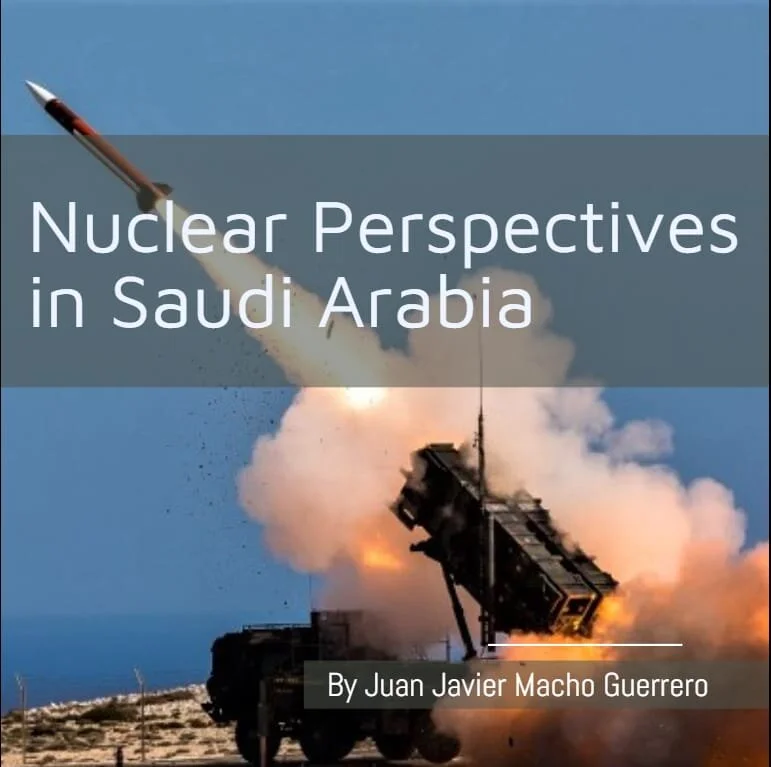India’s development of a ballistic missile system is threatening the credibility of Pakistan’s nuclear deterrent. To regain its credibility, Pakistan is improving its nuclear arsenal, quantitatively and qualitatively, which might lead to an arms race. Additionally, a more developed Indian BMD system would incentivise both India and Pakistan to conduct a nuclear first strike during a conflict.
Nuclear Perspectives in Saudi Arabia
Riddled with persistent conflicts, bitter rivalries and a plethora of economic, social and political fractures, the Middle East stands today as one of the most convoluted regions of the globe. As such, the international community holds a great interest in promoting effective policies to avoid the proliferation of weapons of mass destruction. The tensions coming from Iran's nuclear program have been for long a top priority in this area, but other regional actors should not be overlooked, as they may play an important role in the near future’s nuclear dynamics. This is the case of the Kingdom of Saudi Arabia, whose perspectives on nuclear technology, both for civil and military uses, will be explored in this article.
What Does Iran’s Threatened Withdrawal from the 2015 Nuclear Agreement Mean for US-Iranian Tensions?
“Iranian President Hassan Rouhani announced that Iran will begin to reduce its compliance with the Joint Comprehensive Plan of Action (JCPOA) if the remaining members observing the deal fail to ease the weight of U.S. sanctions. European efforts to circumvent U.S. sanctions have thus far rendered insufficient results due to the overwhelming economic pressure of the U.S. measures. Europe’s apparent rejection of the withdrawal suggests that the European members are not convinced that Iran will follow-through with its threatened action. Iran’s tensions with the U.S., however, will ostensibly continue to escalate.
Non-Proliferation Treaty and the UN Nuclear Weapons Ban
On 7th July 2017, 122 nations passed the Treaty on the Prohibition of Nuclear Weapons (TPNW) through a United Nations mandate. All Nuclear Weapons States (NWS) and the states under their protection boycotted the debate except for The Netherlands: they attended all the negotiations and then voted against the treaty.
3D PRINTING AND NUCLEAR PROLIFERATION
The combination of innovation and digitalisation poses a threat to the Non-Proliferation Treaty (NPT) as the current institutional framework is targeted at objects, not information. The spread of technology does not fall under the jurisdiction of the NPT and is, due to its digital nature, hard to regulate.
By Caitlin Irvine
The political implications of the recent technological tsunami have yet to be fully explored. Additive Manufacturing (AM), the broader term for 3D printing is one such area as it is displaying the potential to alter the global nuclear balance. Although AM technology has been in use since the 1980s, investment in 3D printing has increased in the 21st century as the initial intellectual property rights expired [1].
After a non-profit organisation called Defence Distributed produced the Computer Aided Design files for a 3D printed handgun, the plans were downloaded over 100,000 times around the world before the cease and desist order came into effect [2]. Although currently it is not possible to use this technology to manufacture nuclear weapons due to the export controls on the maraging steel required for use in centrifuges, 3D printing represents a potential proliferation pathway [3]. The combination of innovation and digitalisation poses a threat to the Non-Proliferation Treaty (NPT) as the current institutional framework is targeted at objects, not information. The spread of technology does not fall under the jurisdiction of the NPT and is, due to its digital nature, hard to regulate.
The need for a regulatory framework, however, is urgent. In 2015, General Electric used a AM process called Direct Metal Laser Melting to produce a jet engine capable of 33,000 rotations per minute, similar to the requirements of a uranium-enriching centrifuge [4]. As 3D printing technology, expands in the aerospace industry it will develop a reputation for quality manufacturing; an example of this emerging trend is Raytheon, the U.S. defence contractor, who is attempting to use 3D printing technology to create components of a guided missile system that can be used for a nuclear warhead [5].
Policy must keep comfortable pace with technological advances. Even though AM is still an evolving technology, policy is seriously lagging behind. With no export controls or centralised manufacturing base for the AM industry, the technology is decentralised and open source – to such a degree that my flatmate built two 3D printers in his bedroom for his undergraduate dissertation. Presently, it is possible to almost completely build handguns, grenade launchers, drones, and even guided missiles [6]. Developments in AM technology are therefore likely to impact the system of global governance and non-proliferation because of the variety of products that can be produced. Especially since there is no way of knowing in what hands this knowledge will end up.
Sources:
[1] Kruth, JP, Leu, MC, and Nakagawa, T (1998) ‘Progress in Additive Manufacturing and Rapid Prototyping’,
CIRP Annals, Vol 47: 2, pp 52. https://doi.org/10.1016/S0007-8506(07)63240-5
[2] Morelle, R (2013) ‘US government orders removal of Defcad 3D-gun designs’ [online] BBC News
http://www.bbc.com/news/technology-22478310
[3] Christopher, G 2015, '3D Printing: A Challenge to Nuclear Export Controls'
Strategic Trade Review, vol 1, no. 1, 2, pp. 22.http://www.str.ulg.ac/3D_Printing_A_Challenge
[4] GEreports (2015) ‘The 3D Printed Jet Engine’, YouTube
https://www.youtube.com/watch?v=W6A4-AKICQU
[5] Raytheon (2017) ‘To Print a Missile: Raytheon research points to 3-D printing for tomorrow's technology’
[online] https://www.raytheon.com/news/feature/print-missile
[6] Fey, M (2017) ‘The Increasing Salience of 3D Printing for Nuclear Non-Proliferation’ [online],
Peace Research Institute Frankfurt Blog, https://blog.prif.org/





